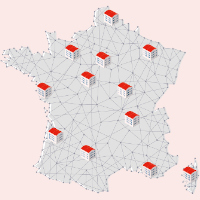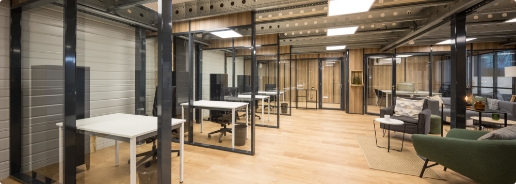How to ensure safety at work
Useful information to ensure safety at work
Falls from height are responsible for a large number of lost-time accidents at work. Accidents at height are the 2nd leading cause of work-related fatalities. And while the building and civil engineering sector is highly exposed, many other activities are also concerned, such as maintenance, upkeep and cleaning.
Regulations require employers to assess the risk of falls and adopt a preventive approach.
The application of prevention principles leads to the search for solutions to avoid exposure to risk. This approach must be integrated into the design of a structure or piece of work equipment. When it is not possible to avoid exposure to the risk, permanent equipment must be installed to provide collective protection against it. Consideration must be given to all means of access (means of access also includes the workstation).

To ensure personnel safety, the means of access must be chosen in accordance with the applicable technical regulations.
Where permanent installations are unable to provide a safe workstation, temporary means of access may be considered. The choice of equipment depends on the nature of the work and the height at which it will be used. Ladders, stepladders and steps should be considered as temporary means of access.
The French Labor Code specifies that :
-
Temporary work at height must be carried out from a workstation designed, installed or equipped in such a way as to protect the health and safety of workers. The workstation must enable work to be carried out under ergonomic conditions (Art. R4323-58 of the French Labor Code).
-
The prevention of falls from height is mainly ensured by rigid guardrails of appropriate strength, integrated or securely attached, placed at a height of between 1m and 1.10m. They must include at least a 100 to 150mm stop plinth, depending on the height chosen for the guardrails, a handrail and an intermediate rail at mid-height (Art. R4323-59 of the French Labour Code).
-
Ladders, stepladders and steps may not be used as workstations. However, such equipment may be used where it is technically impossible to use equipment for the collective protection of workers, or where the risk assessment has established that the risk is low and that the work is of short duration and not repetitive in nature. (Art. R. 233-13-22. ).
Recommendations for reducing the risk of falls
Discover our selection of stepladders and individual platforms designed to reduce the risk of falls and RSI
2-step rolling stepladder

Aluminum stepladder designed to AFNOR FD E85-301 specifications, in partnership with CRAMIF
Folding Rolling Platform

Aluminum platform ideal in the workshop for working at height in complete safety. Complies with French standard NF P 93-353.
Tipper Access Platform

Fitted with a ramp and guardrail, this platform enables the operator to access a waste skip in complete safety.
Do you have a project?
Our 80-strong sales team in 12 branches across France, backed up by our 20-strong design office, can help you with all your needs.
I've got a project!

